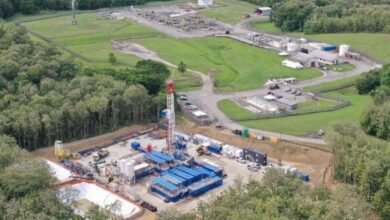Geothermal holds potential for new energy – and for new drilling
By Linda Hsieh, assistant managing editor
Like many renewable energy sources, geothermal carries substantial potential for powering the world in an environmentally friendly way. However, also like many renewable energy sources, geothermal remains unable to evolve into a fully viable alternative to oil or natural gas.
The late 1970s and early ’80s saw rapid growth of the US geothermal industry, mostly in western states such as California and Nevada. But by the ’90s, geothermal had hit a wall. Demand went down in the face of strong competition from natural gas – fairly cheap at the time, if you recall. Even after the US government added an investment tax credit for geothermal drilling in 1992, the market continued to stall.
Times have changed since the ’90s. Neither oil nor natural gas are exactly cheap these days. Since the early 2000s, drilling costs for geothermal wells have decreased relative to oil/gas wells – likely due to improved geothermal drilling practices and because oil/gas drilling costs have gone up significantly. Not to mention there’s an increasing focus worldwide, by both energy consumers and governments, on going “green.”
The US Department of Energy is now aggressively working to push geothermal to the next level – not just in the agency’s traditional arena of technology R&D, but also in government policy and technology commercialization. “These are new areas for us, and I hope we will have a greater role and greater impact in the future,” said Steven Chalk, deputy assistant secretary for renewable energy at the DOE’s Office of Technology Development, Energy Efficiency and Renewable Energy (EERE).
The next step: Enhanced geothermal systems
Producing geothermal energy means tapping into naturally existing hydrothermal reservoirs and generating power off of the heated fluids. The problem is that these reservoirs aren’t found in as many regions as would be required for geothermal drilling to really hit it big – big enough to make it a true alternative to oil and natural gas, and big enough to possibly address climate change issues.
The DOE has been studying the potential of enhanced geothermal systems (EGS), which basically engineer rocks to create hydrothermal reservoirs. For drilling contractors, the process means a lot of new drilling opportunities – many injection and production wells will be needed, although in an environment much different from oil/gas. Stimulation and fracturing are also critical parts of the EGS.
According to a report released last year by MIT, there are an estimated 13 million exajoules (1018 joules) of heat that are EGS-accessible in the US. To put that in perspective, the DOE said, total US energy usage per year is about 100 exajoules.
So, the good news is, the potential is significant. The challenge, however, is once the reservoirs are created, can fluids be produced from them at sufficient rates to be economic?
DOE program
On 18 June, the DOE issued a Funding Opportunity Announcement (FOA) for the R&D and demonstration of EGS technology. Up to $90 million was offered over four years, including $40 million on R&D projects and $50 million on demonstration projects.
R&D projects will target technologies needed to create reservoirs at temperatures up to 300°C and depths down to 10 km. Critical technologies have been identified as: downhole pumps, fracture characterization, image fluid flow, high-temperature logging tools/sensors, stimulation prediction models, tracers/tracer interpretation, and zonal isolation. Demonstration projects will be cost-shared with industry and will focus on stimulating existing unproductive geothermal reservoirs.
For more information on geothermal drilling, visit EERE’s website at www.eere.energy.gov. Linda Hsieh can be reached at linda.hsieh@iadc.org.




